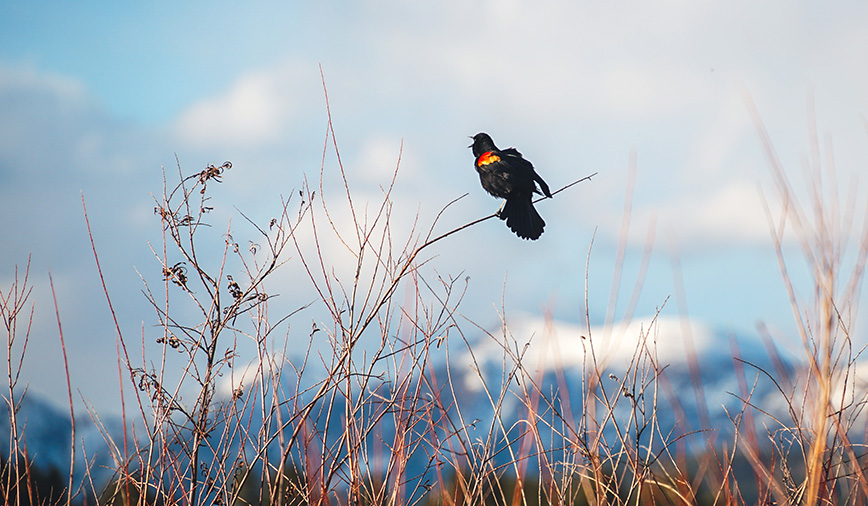Pam’s Perspective
From the…
Pam Otto is the Manager of Natural Programs and Interpretive Services for the St. Charles Park District
March 8, 2013
After a week of winter weather, what could be more welcome than some signs of spring? The forecast calls for rain—not snow—and the clocks are changing tonight, so right off the bat we have two unmistakable indications that the times they, as Bob Dylan would say, are a changin’.
Here, in handy checklist form, are 10 more of our naturalist department’s favorite signs of spring:
. Melting snow! We waited and waited for it to come, but now, five days after it fell, I’m not all that sorry to see it start to disappear.
. Woodpeckers, both male and female, are drumming. Listen for the rapid-fire rat-a-tat of our local species as they pound on hollow trees (and gutters) to declare territories.
. Daylight is lasting longer. Hard to believe, but we’ve added more than 150 minutes to our day length since the winter solstice back in December. Plus, we’re less than two weeks away from the spring equinox, March 20, when day and
night will equal each other at 12 hours
apiece.
. Canada geese are pairing off. They still
prefer the safety of the flock at night, but
these ever-present members of our
suburban landscape have started “dating”
during the day. Look for pairs feeding just
ever-so-slightly away from each other in
areas where that longer-lasting sun has
melted the snow off the grass.
. Mammals are on the move. Our hibernating woodchucks and bats haven’t stirred yet, but mammals that spend the winter in and out of torpor (periods of inactivity) have roused and are out and about. At Hickory Knolls, we have a young opossum who’s been making regular trips to the ground beneath our birdfeeders for almost two weeks now. Skunks and raccoons are making their presence known too, leaving tracks and other unmistakable, um, signs, behind.
. Male red-winged blackbirds are returning. Competition is stiff among these marsh denizens, which happen to be polygynous (one male, many females) and younger males come back first, in the hopes of besting their older rivals in the race to claim the best territories. They’ll defend their turf fiercely throughout the breeding season. (Remember this come June 20-something, when the news will no doubt include reports of redwing “attacks” on unsuspecting folks strolling too close to a well-hidden nest.)
. Spiders! Next time the sun is out, find a patch of ground where the snow has melted and leaf litter is plentiful. Bet you’ll find spiders there, tiny little guys stalking even tinier insect prey.
. Male American goldfinches are brightening. Throughout the winter months, these guys have flitted about in drab olive-yellow. But with spring just around the corner, their plumages are beginning to change. Soon they’ll be bright yellow, just as their nickname “wild canary” implies..
. Maple buds are swelling. Live near a silver maple? Those giant blobs on the ends of the branches are this year’s leaves, coiled up in buds awaiting the first rush of sap. A few more warm days and cool nights and things should really start popping.
. Woolly bears are wandering. It doesn’t take a lot of heat to wake up some of our overwintering caterpillars. And these little guys, with their fuzzy black and brown bands, are among our most recognizable local larvae. Look for them on ice and snow, where they don’t blend in at all, as well as on dried leaves, where their coloration offers a bit more camouflage.
I suppose I could go on and on, for more signs of spring are just around the corner. Soon comma, question mark and morning cloak butterflies will come out of hibernation; salamanders will migrate to breeding ponds; frogs will start calling. But now my phone is ringing. And that’s a sure sign that it’s time to stop with this talk about signs…at least for now.

